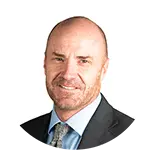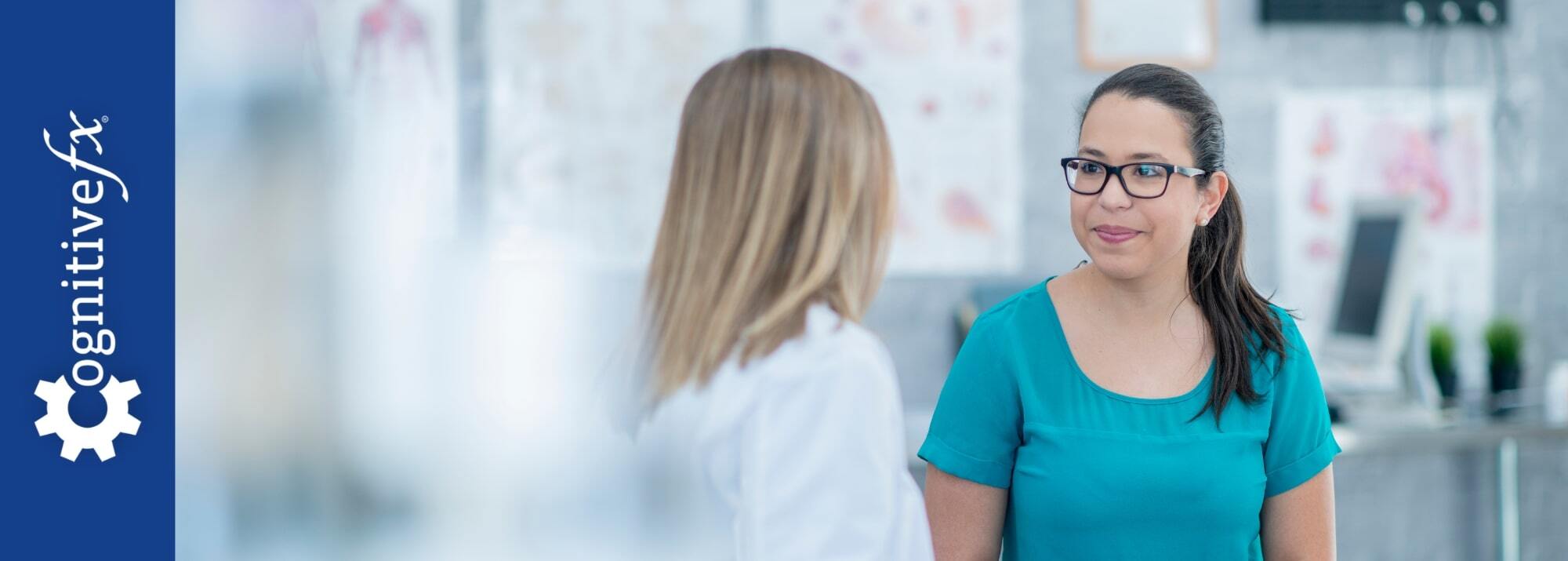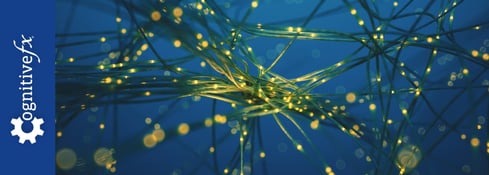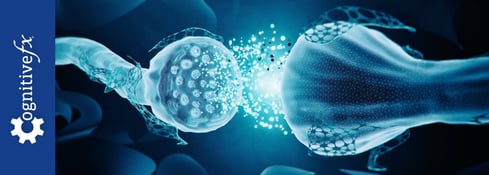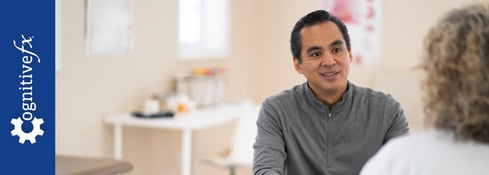For many people living with major depression, antidepressant medications either don’t work or only get them part of the way to recovery. Symptoms may ease for a while, but then return, or never fully go away.
If that’s been your experience, you might be exploring other options. Two non-invasive brain stimulation techniques you may be considering are transcranial magnetic stimulation (TMS) and transcranial direct current stimulation (tDCS).
Both are forms of neuromodulation, and both aim to reduce symptoms of depression by changing activity in specific brain regions. However, TMS and tDCS differ in how they stimulate neurons, their effectiveness, their potential side effects, and how much they cost.
In this article, we’ll walk through each treatment—what it is, how it works, and what to expect—so you can make an informed choice.
We cover:
How TMS Works
TMS uses magnetic fields to “wake up” part of the brain called the dorsolateral prefrontal cortex (DLPFC)—an area linked to motivation, reward, and positive emotions. In psychiatry, this region is a well-studied target for the treatment of depression.
During TMS treatment, you sit comfortably while a small magnetic coil rests on your head. This coil delivers short bursts of magnetic energy, which pass through your skull and stimulate cortical excitability in nerve cells. Over time, these sessions can help rebalance brain function and improve mental health.
Types of TMS therapy include:
-
Repetitive transcranial magnetic stimulation (rTMS): The original method. Sessions are usually five days a week for 4–6 weeks, each lasting about 37 minutes.
-
Intermittent Theta-Burst Stimulation (iTBS): A newer, FDA-approved protocol using bursts of high-frequency magnetic pulses. Sessions take only three minutes, enabling clinics to offer accelerated TMS protocols in which patients receive multiple sessions per day over a condensed treatment schedule. Many patients notice improvements quickly.
-
Deep TMS (dTMS): Uses a special H-coil design to reach deeper brain regions than standard coils, potentially stimulating areas of the brain involved in conditions like obsessive-compulsive disorder (OCD) and major depressive disorder (both of which its FDA-approved for). Research is exploring its use for other neurological and mental health conditions.
-
Accelerated fMRI-Guided iTBS: Developed at Stanford, this method combines iTBS with fMRI and neuronavigation for precision targeting on an accelerated treatment schedule. In randomized controlled trials, SAINT™ TMS showed remarkable results (discussed below) for people with treatment-resistant depression.
How tDCS Works
tDCS stimulates the DLPFC by using a very low-level electrical current to influence neurons, instead of magnetic pulses.
Two electrodes—one positive (anode) and one negative (cathode)—are placed on your head. The current flows between them, changing cortical excitability and influencing inhibitory or excitatory brain activity.
You might feel tingling, itching, or warmth under the electrodes—these are normal effects of tDCS.
Typical tDCS treatment details:
- Sessions last 20–40 minutes
- Often repeated once or twice daily for several weeks
- Can be done at home with a small device, though results are generally better in a clinical setting under trained clinicians
Unlike electroconvulsive therapy (ECT), tDCS uses only a fraction of the electrical power and does not cause seizures. Neuroscience research suggests it can also enhance plasticity in the brain, which may improve learning and mood regulation.
Which Is More Effective?
Evidence from systematic reviews and meta-analyses shows clear differences between these treatments.
TMS
-
Standard rTMS treatment improves depression in about half of patients, with about one-third reaching remission. Combining rTMS with psychotherapy can improve outcomes.
-
Accelerated TMS and iTBS produce similar results (often more rapidly).
-
Some studies suggest Deep TMS offers higher response rates than standard rTMS for treatment-resistant depression, though long-term remission data is still limited.
-
Accelerated fMRI-Guided iTBS stands out. In one double-blind randomized clinical trial, 85% of participants responded and 78% reached remission—all with treatment-resistant depression.
tDCS
-
Research results are mixed. Some controlled trials show it works about as well as antidepressants (~30% respond, ~20% achieve remission).
-
Works best when paired with other interventions like medication or even TMS.
-
Home-use devices are convenient but less precise, which may explain why some studies show no benefit.
Which Is Safer?
Both TMS and tDCS are considered very safe, especially compared to older treatments like ECT. Still, each comes with its considerations.
TMS
Most people tolerate TMS well. You might feel light tapping on your head during treatment or have mild side effects afterward, such as a headache or dizziness. These usually fade within hours.
The most serious potential adverse effect—a seizure—is extremely rare, happening in fewer than 1 in 10,000 treatments.
tDCS
Side effects are generally mild: tingling, itching, warmth, or slight redness where the electrodes sit. These sensations usually stop once treatment ends.
Rarely, skin burns can occur if the electrodes aren’t placed correctly.
What About Cost and Insurance?
TMS
-
rTMS: Often covered by insurance after you’ve tried multiple antidepressant medications. Ranges from $6,000–$15,000 without insurance.
-
iTBS: Similar price range to rTMS, but typically not covered by insurance.
-
Deep TMS: Similar price range to rTMS, but covered by many insurance providers.
-
Accelerated fMRI-Guided iTBS: Generally not covered by insurance. Clinics offering SAINT™ TMS (with proprietary Stanford-developed technology) charge $30,000+. Exceptions for Medicaid and Medicare patients receiving SAINT in hospital settings. Some clinics (including our own) offer accelerated fMRI-guided iTBS at a significantly lower price.
tDCS
-
Home-use devices: $100–$500.
-
In-clinic treatments: Around $1,500 for 10 sessions.
-
Not covered by insurance.
TMS vs. tDCS: Treatment Comparison Summary
Choosing the Right Option
A low-cost, at-home tDCS device can be appealing, but results are often modest—and for some, disappointing. TMS, especially newer accelerated forms, offers higher success rates, but it’s a bigger financial commitment.
Your choice may come down to a balance of effectiveness, cost, access, and personal preference.
If price is not a key limiting factor, research suggests that accelerated fMRI-guided iTBS—the treatment we offer at Cognitive FX—offers the greatest chances of symptom relief.
Receiving Accelerated fMRI-Guided iTBS at Cognitive FX
At our clinic in Provo, Utah, we offer an accelerated, fMRI-guided iTBS protocol that provides the precision of SAINT™ TMS at a fraction of the cost.
Our approach:
-
Use advanced fMRI brain imaging and neuronavigation software to target the exact DLPFC spot that will be most effective for you. This ensures pinpoint accuracy for every treatment session, giving you the highest chance of a successful outcome.
-
Combine TMS with cognitive behavioral therapy (CBT) to boost and sustain results.
-
Provide treatment in an accelerated one-week schedule for minimal disruption to your life.
We do not treat patients under 18, over 65, with a history of seizures, or in active suicidal crisis.
To see if you’re a good fit for our accelerated fMRI-TMS treatment, take our good fit quiz. You can learn more about our approach here.
Cited Research
